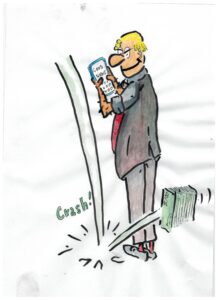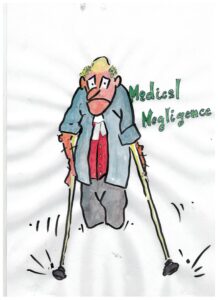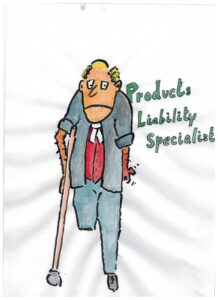Accounting for profits
- 2019-02-08
- By whiggs
- Posted in Equity, Trusts & Trustee Law
Accounting for profits
- More recently in Victoria Friendly Society Ltd v Lifeplan Australia Friendly Society Ltd (2018) 92 ALJR 918; [2018] HCA 43 Kiefel CJ, Keane and Edelman JJ said (at [6]-[7]) (citations omitted):
In Consul Development Pty Ltd v DPC Estates Pty Ltd, in a passage accepted as authoritative by both sides in the present case, Gibbs J said that:
a person who knowingly participates in a breach of fiduciary duty is liable to account to the person to whom the duty was owed for any benefit he has received as a result of such participation.
So described, the liability to account and to disgorge benefits encompasses “any benefit” received by the knowing participant in a breach of fiduciary duty “as a result of” that participation. The benefit of a business connection is such a benefit. Foresters’ submission fails to come to grips at all with the fact that the benefit that Foresters stood to gain, and in fact acquired, from its participation in the various acts of disloyalty by Woff and Corby was not sporadic deposits from retail customers; it was the business connections of Lifeplan and FPM.
- Their Honours also said (at [13]-[16]) (citations omitted):
Quantification
Once it has been determined that a benefit or advantage has been caused by the acts of knowing assistance, there remains the question of quantification of the benefit to be disgorged. While it is true that equity will not require an errant fiduciary or a participant in a breach of fiduciary duty to account for an advantage which the breach of fiduciary duty has not caused or to which it has not sufficiently contributed, where causation is sufficiently established the onus is upon the errant fiduciary or participant to show that he or she should not account for the full value of the advantage. That onus is not discharged by mere conjecture or supposition giving the benefit of the doubt to a proven wrongdoer. The requirement of proof conforms with the obligation of a party charged with a breach of fiduciary duty to show why the full value of an advantage obtained in a situation of conflict of duty should not be disgorged.
There are two ways in which the wrongdoer might discharge that onus and reduce the extent of the liability to disgorge profits. The first way, which can involve notorious difficulties in attribution of costs, is by proving his or her entitlement to an allowance for costs incurred, and labour and skill employed. No issue of an allowance arises, or was relied upon, in this appeal because it was accepted that the expenses included in the discounted cash flow included an amount for the work and effort of Woff and Corby.
The second way, which was the focus of this appeal, is by demonstrating that the benefit or advantage is beyond the scope of the liability for which the wrongdoer should account for profits. A wrongdoer might prove that some profit or benefit is beyond the scope of liability for which he or she should account if the profit or benefit has no reasonable connection with the wrongdoing. For example, in Frank Music Corporation v Metro-Goldwyn-Mayer Inc, the Ninth Circuit Court of Appeals accepted that a copyright infringement by MGM Grand Hotel Inc in a performance at the MGM Grand Hotel entitled the plaintiffs to the profits directly from the performance. It also entitled the plaintiffs to a proportion of indirect profits, including from the consequential increase in hotel room bookings which were held to have a “sufficient nexus” with the performance. But the direct profit from the performance to be disgorged was limited to 9% because the copyright infringement comprised only the substantial part of Act IV in a 10-act performance. Nor did it entitle the plaintiffs to any profits made by the liable parent company, Metro-Goldwyn-Mayer Inc, as a result of “the advertising value” of the hotel.
No precise test has been prescribed for determining when it will be inequitable to account for a benefit on the basis that it has no reasonable connection with wrongdoing. Nor is there any need for such a test. All of the circumstances must be considered, including the nature of the conduct. It is pertinent here that the profits were from deliberate and dishonest conduct, and were those desired to be achieved.
SEARCH BLOG POSTS
LATEST BLOG POSTS
- Updated product safety mandatory reporting guidance for suppliers now available
- Pleading fraud – cause and effect is essential
- Does the Trustee’s right of indemnity have priority over the right of beneficiaries in relation to assets?
- Rules of war (in a nutshell) | The Laws Of War
- MH370 Final Report
Past Blog Posts
- December 2021
- September 2021
- August 2021
- May 2021
- April 2021
- March 2021
- August 2020
- February 2020
- September 2019
- February 2019
- December 2018
- July 2018
- April 2018
- December 2017
- May 2017
- February 2017
- December 2016
- November 2016
- October 2016
- September 2016
- August 2016
- April 2016
- March 2016
- October 2015
- September 2015
- August 2015
- May 2014
- April 2014
- March 2014
- January 2014
Categories
- Appeals
- Artificial Intelligence
- Aviation law
- Banking and Finance Law
- Blogs
- Civil Liability Act
- Class Actions
- Coding for lawyers
- common law
- Consumer Claims (TPA)
- Contract Law
- Contractual Interpretation
- Criminal law
- Deeds
- Docassemble
- duty of care
- Engineering Law
- Equity
- Evidence
- Exclusion Clauses
- Execution of documents
- Expert Witness
- featured
- Financial Services
- Fraud
- Fundraising (Chapter 6D)
- General comment
- Home Building Law
- Insurance
- Legal drafting
- Local Court
- Medical Negligence
- MH370
- Motor Accidents
- Negligence
- Occupiers negligence
- Other
- Personal Injury
- Personal Property Securities (PPSA)
- Pleading
- Practice & Procedure
- Products Liability
- Property
- Real Property
- Reasons for a decision
- Securitisation
- Security (Mortgages & Charges)
- Sentencing
- Swaps & Derivatives
- Teaching
- Transactional Law
- Transfer of financial assets in transactions
- Trusts & Trustee Law
- Uncategorized
- War and Weaponry
- Witnesses
SEARCH BLOG POSTS
LATEST BLOG POSTS
- Updated product safety mandatory reporting guidance for suppliers now available
- Pleading fraud – cause and effect is essential
- Does the Trustee’s right of indemnity have priority over the right of beneficiaries in relation to assets?
- Rules of war (in a nutshell) | The Laws Of War
- MH370 Final Report
Past Blog Posts
- December 2021
- September 2021
- August 2021
- May 2021
- April 2021
- March 2021
- August 2020
- February 2020
- September 2019
- February 2019
- December 2018
- July 2018
- April 2018
- December 2017
- May 2017
- February 2017
- December 2016
- November 2016
- October 2016
- September 2016
- August 2016
- April 2016
- March 2016
- October 2015
- September 2015
- August 2015
- May 2014
- April 2014
- March 2014
- January 2014
Categories
- Appeals
- Artificial Intelligence
- Aviation law
- Banking and Finance Law
- Blogs
- Civil Liability Act
- Class Actions
- Coding for lawyers
- common law
- Consumer Claims (TPA)
- Contract Law
- Contractual Interpretation
- Criminal law
- Deeds
- Docassemble
- duty of care
- Engineering Law
- Equity
- Evidence
- Exclusion Clauses
- Execution of documents
- Expert Witness
- featured
- Financial Services
- Fraud
- Fundraising (Chapter 6D)
- General comment
- Home Building Law
- Insurance
- Legal drafting
- Local Court
- Medical Negligence
- MH370
- Motor Accidents
- Negligence
- Occupiers negligence
- Other
- Personal Injury
- Personal Property Securities (PPSA)
- Pleading
- Practice & Procedure
- Products Liability
- Property
- Real Property
- Reasons for a decision
- Securitisation
- Security (Mortgages & Charges)
- Sentencing
- Swaps & Derivatives
- Teaching
- Transactional Law
- Transfer of financial assets in transactions
- Trusts & Trustee Law
- Uncategorized
- War and Weaponry
- Witnesses




